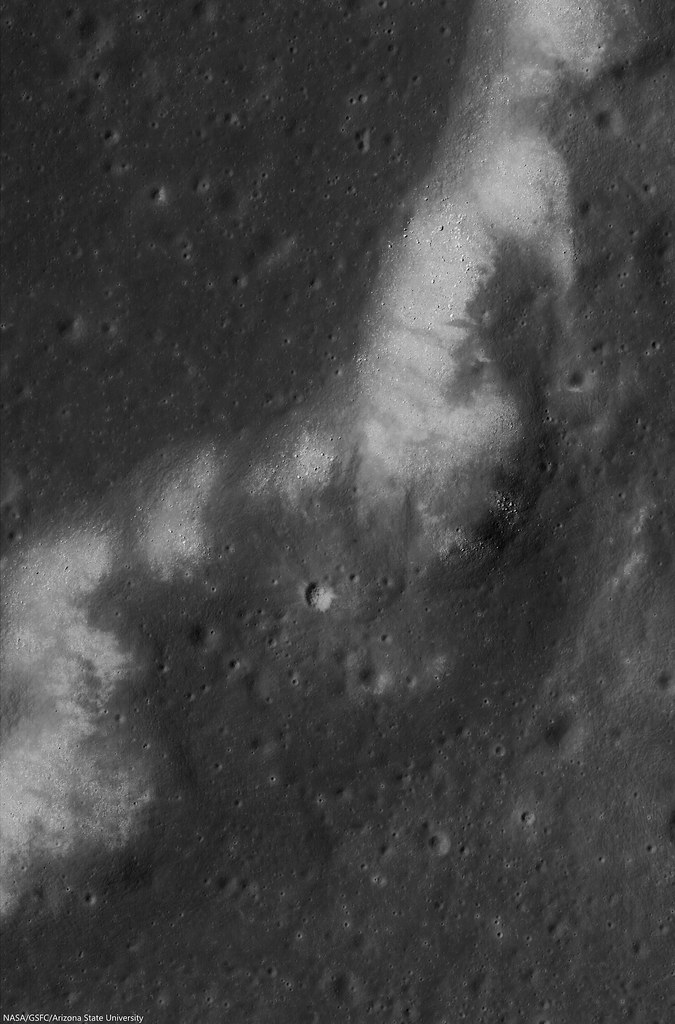 |
| Portion of a wrinkle ridge found in Mare Nubium. The crest and side of the ridge is lined with high reflectance boulders, likely eroded from the fractured basalts that make up the ridge. 2.4 km wide field of view from LROC NAC mosaic M1144863959LR, LRO orbit 20752, January 20, 2014; 46.33° incidence, resolution 83 cm, from 80.7 km over 19.5°S, 349.04°E [NASA/GSFC/Arizona State University]. |
LROC News System
Wrinkle ridges on the Moon are positive-relief tectonic features found predominately in mare, although some even occur inside craters.
Tectonic forces that created the wrinkle ridges were caused by the sinking of high density basalts that poured over the crust (lower density) during the formation of the maria.
In general this sinking stretched the crust on the margins of the maria, forming graben, and compressed the rock in the center of the maria, forming wrinkle ridges.
Tectonic forces that created the wrinkle ridges were caused by the sinking of high density basalts that poured over the crust (lower density) during the formation of the maria.
In general this sinking stretched the crust on the margins of the maria, forming graben, and compressed the rock in the center of the maria, forming wrinkle ridges.
The opening image shows a portion of a wrinkle ridge located in Mare Nubium. The slope of this ridge is littered with boulders, which have higher reflectance than the surrounding material. Where do these boulders come from?
They were likely eroded from the fragmented basalt by seismic events from nearby impacts. The bedrock (mare) was pre-fractured during the formation of the wrinkle ridge, thus the boulders' size and shape likely represents these small scale internal fracture patterns. The ridge is still eroding today! New boulders will erode out of the edge of the ridge until there is no more ridge to erode, while the boulders will be turned to dust by micrometeorite bombardment.
 |
| Corrected mosaic of 20000 lines by 10000 samples (of 52224 by 5000 x 2), both the left and right camera frames from LROC NAC observation M1144863959LR, January 20, 2014; from 80.7 km over 19.5°S, 349.04°E [NASA/GSFC/Arizona State University]. |
 |
| Accepted nomenclature of features of the western portion of Mare Nubium. The arrow designates the location on a prominent wrinkle ridge shown at high-resolution in LROC NAC mosaic M1144863959LR. The field of view is, in turn, a mosaic of LROC Wide Angle Camera (WAC) monochrome (604 nm) observations (see the full-size WAC mosaic, with inset, HERE) swept up over three sequential orbital passes June 11, 2011, incidence 78.4° at 61.8 meters resolution, from 45.3 km [NASA/GSFC/Arizona State University]. |
Related Posts:


No comments:
Post a Comment